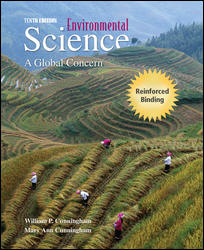1 A) Clear-cuts are generally insignificant in this area. B) Occasional clear-cuts can be found here, in various stages of reforestation. C) At least half the landscape appears to be farms, surrounded by forests with occasional indications of clear-cuts sprinkled about. D) Clear-cuts checker most of the landscape in any direction except south, where the land is mostly converted to agriculture. E) Clear-cuts checker most of the landscape in any direction except north, where the land is mostly converted to agriculture. 2 A) The trees have been stripped completely from the riparian zone. B) The riparian zone is a very thin row of trees. C) The riparian zone is bordered by a strip of trees more than ten thick. D) The riparian zone is bordered by a thick zone of old growth forest. E) It's hard to discern where the riparian zone ends and the forest begins. 3 A) Unbroken forest is very hard to find in this region. B) Unbroken forest is spotty in this region. C) Unbroken forest covers roughly half of the region. D) There are extensive areas of unbroken forest. E) Most of the landscape is unbroken forest. 4 A) It would be easy, because old-growth forest covers most of this region. B) It would be fairly easy, because there are still large tracts of old-growth forest remaining. C) It could be done because almost half of the forest remains old-growth. D) It would be fairly hard, although a few large patches of old-growth forest remain. E) It would be quite difficult because there is almost no extensive old-growth forest remaining in this region.





